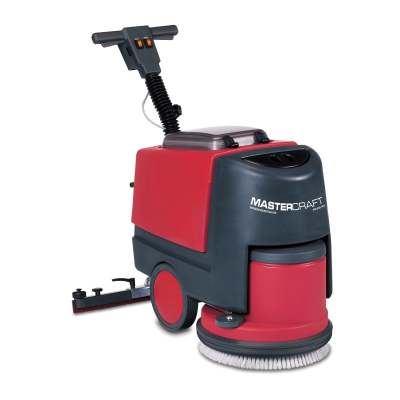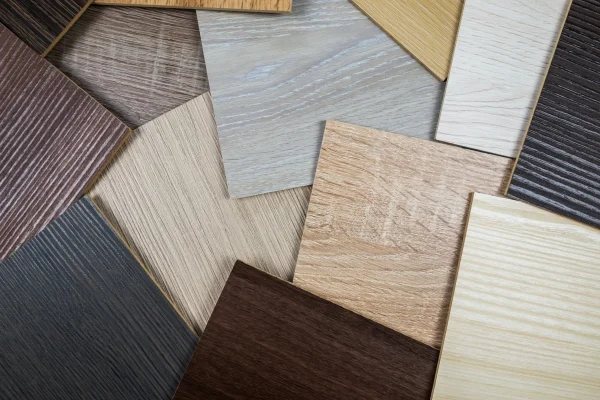Best Way to Mop Commercial Floors
Â
Commercial floors are a major investment for any business, and they vary significantly based on the amount of foot traffic they endure. Whether it's hardwood, tile, ceramic, or commercial carpet, each type requires specific cleaning techniques to maintain their appearance and longevity. Understanding these differences is essential for keeping your floors in top condition.
So, let's dive into the best ways to keep your commercial floors clean and looking their best!
Why Is Deep Cleaning Commercial Flooring Important?
Floors are the first thing customers see when entering your business. They set the tone and can influence their perception of your brand. If your floors are dirty or unkept, it can create a negative impression that may deter potential customers from returning. On the flip side, clean and well-maintained floors signal professionalism and attention to detail, which can boost customer confidence and encourage more sales.
Moreover, high-traffic areas like commercial floors are constantly exposed to dirt, dust, and spills. This makes them more prone to wear and tear, especially in food service environments where grease and stains are common. Regular cleaning and deep cleaning help prevent long-term damage and ensure a safer environment for both employees and customers.
Imagine walking into a store with sticky, dusty, or muddy floors. Would you feel comfortable shopping there? Probably not. Clean floors not only look better but also contribute to a positive customer experience, making them an essential part of your business’s overall image.
That’s why it’s important to set aside time before and after business hours to clean your floors thoroughly. A little effort goes a long way in maintaining a welcoming and professional space.
Essential Equipment for Cleaning Commercial Floors
Before you start cleaning, make sure you have the right tools and equipment to do the job effectively.
Mop
A good mop is essential for cleaning most types of flooring. Choose one that is sturdy and has a head that can be easily replaced or cleaned. Microfiber mops are great for hardwood, string mops work well for tile, and sponge mops are versatile for most surfaces.
- Microfiber Mops - Ideal for hardwood floors as they leave no streaks.
- String Mops - Perfect for tile and ceramic floors because they reach into corners and grout lines.
- Sponge Mops - Suitable for all floor types, but avoid abrasive ones.
Mop Bucket
A mop bucket is necessary to hold your cleaning solution and rinse water. Look for one with a foot pedal to avoid touching dirty water directly.
Cleaning Solution
Use a solution that is appropriate for your floor type. It should be strong enough to remove dirt and grime without damaging the surface. Always read the instructions carefully to ensure safe use.
Vacuum Cleaner
While not always necessary, a vacuum cleaner can be useful for removing loose dirt and debris before mopping. Some models come with steam cleaning functions for deeper cleaning, especially in high-traffic areas.
Wet Floor Signs
If you're mopping, always place wet floor signs to warn people and prevent accidents.
Broom or Dust Mop
Sweeping or using a dust mop before mopping helps remove loose particles, preventing them from being pushed around during cleaning.
Degreaser
For kitchens with tile floors, a degreaser is essential for removing oil and grease buildup.
 Floor Scrubber
Floor Scrubber
For tough stains or extra cleaning, a floor scrubber can be very effective. Choose between manual or electric models depending on your needs.
Now that you know what tools you need, it's time to get started with your cleaning routine!
How to Mop Commercial Floors
Different floor types require different cleaning methods. Here's how to properly mop each one:
Tile Floors
Tile is durable and easy to clean, but it can be slippery when wet. Use a non-slip cleaner and don’t forget to clean the grout. Sweep first, then mix your solution and mop in a back-and-forth motion. Dry with a microfiber mop or let it air dry.
How to Clean Tile Grout
- Mix baking soda, hydrogen peroxide, and dish soap in a spray bottle. Spray the grout and let it sit for 30 minutes.
- Scrub the grout thoroughly with a brush.
- Rinse with warm water.
Hardwood Floors
Hardwood floors are elegant but sensitive. Use a soft-bristled mop or microfiber pad. Avoid over-wetting the floor and always apply wax after cleaning to protect the wood.
Carpet Floors
Carpet requires regular vacuuming and occasional deep cleaning. Use a spot cleaner for stains and consider steam cleaning for a thorough clean.
Â
Vinyl Composition Tile
Vinyl is cost-effective and easy to maintain. Use a mild detergent and water, and avoid over-saturating the floor to prevent water damage.
Hiring Professional Cleaners
If your space is too large for your team, hiring professionals can save you time and ensure quality results. Make sure they are experienced with your specific flooring type to avoid damage.
Always supervise the cleaning process to ensure everything is done correctly, especially for delicate surfaces like carpets or hardwood.
Budget-Friendly Cleaning Tips
You don't have to spend a lot to keep your floors clean. There are many affordable options available, including homemade cleaning solutions.
Make Your Own Cleaner
Combine equal parts white vinegar, rubbing alcohol, and water with a splash of dish soap. This works well for tile and vinyl floors.
DIY Hardwood Cleaner
Mix water, olive oil, and lemon juice for a natural, shiny finish on hardwood floors.
Final Thoughts
Keeping your commercial floors clean doesn’t have to be expensive or complicated. With the right tools, techniques, and a bit of effort, you can maintain a clean and inviting space. Always test new cleaners on a small area first and follow manufacturer guidelines to ensure safety and effectiveness.
Now that you know how to clean your floors, take a look at yours and start sweeping and mopping today!
Metal pallet is widely used in many industries. Due to its durable character, it gradually take away wooden pallet and plastic pallet market place. Nowadays Steel / Metal pallet is often used with racking system. Galvanized Steel / Metal pallet has advantage in cold warehouse. Powder painted Steel Pallet has many colors for your option. Customers can book any color they want and like.
Iron Pallet,Iron Oblong Metal Pallet,Storage Pallet Iron Rack,Iron Metal Steel Pallets
Dalian CS Logistics Technology Co., Ltd , https://www.dlcsem.com

